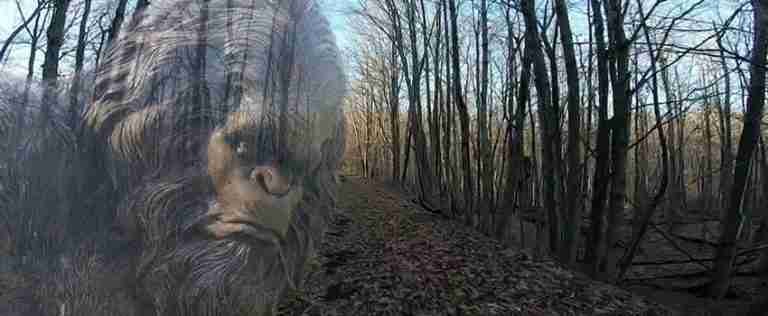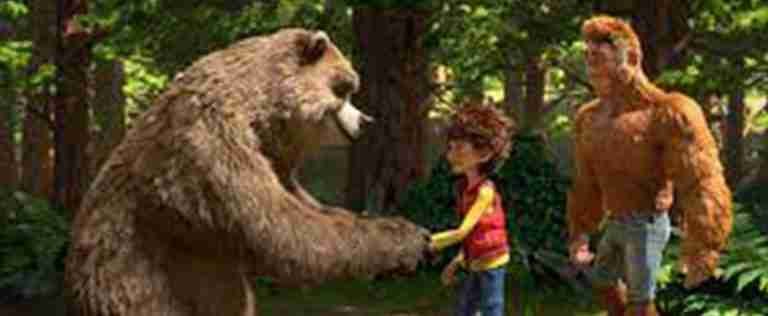Bigfoot in Video Games: A Look at Mention and Features in Mainstream and Indie Titles

Bigfoot, also known as Sasquatch, is a popular figure in American folklore and popular culture. Many people claim to have seen or encountered Bigfoot, and it has become a subject of fascination for many people around the world.
In popular culture, Bigfoot has been mentioned or featured in a variety of media, including movies, television shows, video games, and music. It has also been used in advertising campaigns, including commercials and other marketing materials.
Video games are one medium in which Bigfoot has been featured in a number of different ways. Both mainstream and indie video games have included the creature in their gameplay and storylines.
The purpose of this article is to examine the various ways in which Bigfoot has been featured in video games. The article will explore the different ways that Bigfoot has been used in both mainstream and indie video games, and will consider the impact of these portrayals on Bigfoot’s place in popular culture.
Bigfoot In Mainstream Video Games
Bigfoot has been featured in a number of mainstream video games over the years. One example is Cryptozoic Man, a fighting game released in 1994 that features a Bigfoot character as one of the playable fighters. The game portrays Bigfoot as a powerful and formidable opponent, and includes special effects to depict the creature’s appearance.
Another mainstream video game that features Bigfoot is Sasquatch: Legend of Bigfoot, a puzzle-adventure game released in 2014. The game’s storyline follows a Bigfoot who is on a quest to find his family, and includes gameplay elements that involve solving puzzles and interacting with other characters. The game portrays Bigfoot as a kind and brave creature, and includes special effects to depict the creature’s appearance.
The gameplay and storylines of these games, as well as other mainstream video games that feature Bigfoot, can have an impact on Bigfoot’s place in popular culture. For example, if a game portrays Bigfoot as a powerful and formidable opponent, it may increase people’s respect and admiration for the creature. On the other hand, if a game portrays Bigfoot as a kind and brave creature, it may increase people’s positive perceptions of the creature.
The impact of these games on Bigfoot’s place in popular culture can be significant, as they help to shape people’s perceptions and understanding of the creature. It is important to accurately represent Bigfoot in video games in order to educate people about the myth and folklore surrounding the creature.
Bigfoot In Indie Video Games
Bigfoot has also been featured in a number of indie video games over the years. One example is Bigfoot Hunter, a survival-horror game released in 2018 that follows a group of people who are trying to survive in a forest where a Bigfoot is stalking them. The game portrays Bigfoot as a terrifying and formidable creature, and includes special effects to depict the creature’s appearance.
Another indie video game that features Bigfoot is The Legend of Sasquatch, a puzzle-adventure game released in 2020. The game’s storyline follows a Bigfoot who is on a quest to find a magical artifact, and includes gameplay elements that involve solving puzzles and interacting with other characters. The game portrays Bigfoot as a wise and powerful creature, and includes special effects to depict the creature’s appearance.
The gameplay and storylines of these games, as well as other indie video games that feature Bigfoot, can have an impact on Bigfoot’s place in popular culture. For example, if a game portrays Bigfoot as a terrifying and formidable creature, it may increase people’s fear and respect for the creature. On the other hand, if a game portrays Bigfoot as a wise and powerful creature, it may increase people’s positive perceptions of the creature.
The impact of these games on Bigfoot’s place in popular culture can be significant, as they help to shape people’s perceptions and understanding of the creature. It is important to accurately represent Bigfoot in video games in order to educate people about the myth and folklore surrounding the creature.
Analysis Of Bigfoot’s Portrayal In Video Games
Bigfoot has been portrayed in a variety of ways in video games over the years. Some games portray Bigfoot as a powerful and formidable creature, while others depict the creature as a wise and powerful being. Some games portray Bigfoot in a humorous or lighthearted manner, while others depict the creature in a more serious or respectful way.
The potential influence of these portrayals on Bigfoot’s place in popular culture can be significant, as they help to shape people’s perceptions and understanding of the creature. If Bigfoot is depicted in a positive and sympathetic light in video games, it may increase people’s positive perceptions of the creature. On the other hand, if Bigfoot is depicted in a negative or humorous light in video games, it may decrease people’s positive perceptions of the creature.
It is important to accurately represent Bigfoot in video games in order to educate people about the myth and folklore surrounding the creature. This can help to ensure that people have a nuanced and accurate understanding of Bigfoot and its place in popular culture.
In conclusion, the different ways that Bigfoot has been portrayed in video games, as well as the potential influence of these portrayals on Bigfoot’s place in popular culture, highlight the importance of accurately representing the creature in video games. By accurately depicting Bigfoot in video games, we can help to educate people about the myth and folklore surrounding the creature and contribute to a better understanding of its place in popular culture.
Conclusion: Bigfoot in Video Games: A Look at Mention and Features in Mainstream and Indie Titles
Bigfoot, also known as Sasquatch, is a popular figure in American folklore and popular culture. In video games, Bigfoot has been featured in a number of different ways, including in mainstream titles and indie games.
In mainstream video games, Bigfoot has been featured as a playable character, an NPC (non-player character), or as the main antagonist or protagonist in the game’s storyline. The gameplay and storylines of these games can vary, and can portray Bigfoot in a variety of ways, including as a powerful and formidable opponent, a wise and powerful being, or a humorous or lighthearted character.
In indie video games, Bigfoot has also been featured in a variety of ways. Some indie games portray Bigfoot as a main character, while others depict the creature as a supporting character or an NPC. The gameplay and storylines of these games can vary, and can portray Bigfoot in a variety of ways, including as a terrifying and formidable creature, a wise and powerful being, or a humorous or lighthearted character.
The potential influence of these portrayals on Bigfoot’s place in popular culture can be significant, as they help to shape people’s perceptions and understanding of the creature. If Bigfoot is depicted in a positive and sympathetic light in video games, it may increase people’s positive perceptions of the creature. On the other hand, if Bigfoot is depicted in a negative or humorous light in video games, it may decrease people’s positive perceptions of the creature.
It is important to accurately represent Bigfoot in video games in order to educate people about the myth and folklore surrounding the creature. This can help to ensure that people have a nuanced and accurate understanding of Bigfoot and its place in popular culture.
In conclusion, the different ways that Bigfoot has been featured in video games, as well as the potential influence of these portrayals on Bigfoot’s place in popular culture, highlight the importance of accurately representing the creature in video games. By accurately depicting Bigfoot in video games, we can help to educate people about the myth and folklore surrounding the creature and contribute to a better understanding of its place in popular culture.






